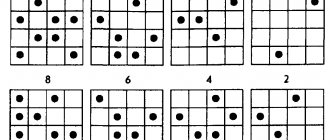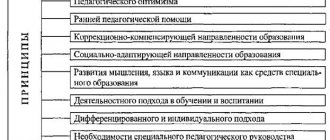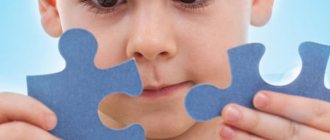Nootropics are neurometabolic stimulants that have a positive effect on complex psychophysiological processes. The mechanism of their action is associated with the restoration of the bioenergetic and metabolic functions of the neuron, as well as the neurotransmitter systems of the brain. The principle of operation of nootropic drugs, as their name suggests, is aimed at improving the functioning of the parts of the brain that are responsible for learning, memory, attention and other cognitive functions.
Nootropic drugs are drugs containing organic or synthetic active substances, as well as their derivatives, which stimulate the functioning of neurotransmitters. They are grouped into a pharmacotherapeutic group with the ATX code N06BX (“Other psychostimulants and nootropic drugs”).
The term nootropics was coined in 1972 by Romanian chemist, psychologist and Ph.D., Corneliu E. Giurgea, who first synthesized piracetam in 1964. Its therapeutic effect turned out to be the opposite of the chemist's expectations - characteristic of psychostimulants, without the occurrence of non-core actions. This effect still remains a mystery to scientists.
Nootropics used in medicine today are presented in the international drug classification system (Anatomical Therapeutic Chemical, ATC), adopted by the Ministry of Health of the Russian Federation in 2002. Other nootropic drugs are created for use within specific countries and are not introduced into the international market.
Clinical use of nootropics
Psychiatrists and psychotherapists can prescribe nootropic drugs either as monotherapy or in combination with other psychotropic drugs. For example, nootropics are prescribed for the treatment of neuroses, attention deficit hyperactivity disorder (ADHD), depressive disorders and other mood disorders, and schizophrenia.
The purpose of prescribing nootropic drugs is to restore the cognitive functions of the brain responsible for the processes of interaction with received information, in particular:
- perception (information, - approx., etc.);
- processing;
- analysis;
- memorization;
- storage;
- correlations;
- conclusions.
Nootropic drugs are also used in other areas of clinical medicine. For example, in pediatrics, where nootropics help restore amino acid deficiency that disrupts protein biosynthesis in the body and metabolic processes in general. In particular, a doctor can prescribe nootropics for children with signs of delayed speech and mental development, mental retardation, and the consequences of perinatal damage to the central nervous system. Doctors of other specializations (speech therapists, neurologists, endocrinologists, gynecologists, urologists, ophthalmologists) can prescribe nootropics depending on the symptoms, including in complex therapy, for various diseases and conditions:
- neuroleptic syndrome;
- stuttering, logoneurosis;
- hyperkinesis, dyskinesia;
- urinary disorders;
- insomnia and other sleep disorders;
- headaches of various etiologies;
- dizziness;
- seasickness;
- open-angle glaucoma;
- vascular diseases of the retina;
- macular diseases;
- diabetic retinopathy;
- Alzheimer's disease;
- Parkinson's disease;
- Huntington's disease;
- with the consequences of TBI.
In other words, the range of use of nootropic drugs is wide and is not limited only to mental disorders. The gentle therapeutic mechanism of drugs in this group allows nootropics to be prescribed to newborns and infants, as well as the elderly. It is also important that nootropic drugs are included in the List of vital and essential drugs for medical use.
When to use them
Most often, nootropics appear in the prescriptions of neurologists. They are prescribed for everything - from neurosis and OCD, from VSD, which does not exist, and dementia. In hospitals, nootropic drugs are administered intravenously to speed up tissue recovery after a stroke or transient ischemic attack - as prescribed by clinical recommendations. But they do not recommend using some nootropics during the acute period of ischemic stroke due to possible neuronal depletion and steal syndrome. Therefore, focusing only on them is not enough.
“First, the doctor makes a generally accepted diagnosis,” says GMS Clinic neurologist Sergei Makarov. — If we are talking about vascular cognitive impairment, then first of all the risk factors are corrected: diabetes mellitus, atherosclerosis and arterial hypertension. Not all diseases require medication."
But many neurologists and psychiatrists, who are not interested in new research, prescribe nootropics to people with impaired memory, attention and learning ability, focusing only on clinical recommendations. For example, Cerebrolysin is recommended for the prevention of dementia at the initial signs of Alzheimer's disease. Also, many doctors believe that nootropics will help you stay sane and memory longer in case of chronic vascular disorders of the brain.
“When a child has a disorder of psychoneurological development, the doctor is tempted to give something to “improve brain function,” says Varvara Khaletskaya, MD, neurologist at the Fantasy children’s clinic. “After all, sometimes there is no effective method leading to a complete recovery. Therefore, the doctor and the parent are trying to invest bit by bit: pedagogical correction, physiotherapy and medications.
It’s another matter when there is an effective treatment protocol, but the doctor continues to treat in his own way. It turns out ugly: instead of pedagogical correction, a child with psycho-speech disorders is given nootropic drugs, and they are advised to “wait” with classes. Or in the case of sensorineural hearing impairment, for which hearing aids are possible, they are referred to a neurologist to “feed” the auditory nerve. In this case, time is simply wasted. Before prescribing a treatment with insufficient evidence base, the doctor should make sure that there is a more effective solution.”
Mechanism of action of nootropic drugs
The mechanism of action of nootropics has not been fully studied to date. However, the principle underlying the therapeutic effect, repeatedly confirmed in vivo, is still of interest to researchers in the fields of biochemistry, cytology and pharmacology. In particular, researchers know that the effectiveness of nootropics in clinical medicine is associated with several mechanisms observed at the cellular level in the central nervous system:
- enhance the synthesis of ATP and its derivatives;
- enhance the process of synaptic transmission in the central nervous system;
- enhance the plastic process in the central nervous system by increasing the synthesis of RNA and proteins;
- enhance the process of glucose utilization;
- have a membrane-stabilizing and antioxidant effect.
Thus, the mechanism of action of nootropic drugs is associated with the restoration of metabolic and bioenergetic processes in the brain, which affect a person’s mood, performance and well-being. A correctly selected nootropic will have the effects necessary for treatment, which manifest themselves over a long period of time, provided that the recommendations of the attending physician are followed (for example, regarding a rational and healthy lifestyle, attending psychotherapy sessions, taking first-line medications).
Rice. 1. Neuron
Do they have any effect?
Until the 2000s, the actual mechanism of action and effectiveness of nootropics was not particularly studied. Doctors prescribed them, and people drank them. There was a myth circulating among medical students that a month-long course of nootropics before exams improves memorization of the material, and to be sure, you need to inject it into a muscle or vein.
Now the proof of the drug’s effectiveness is not the doctor’s word, but research data. There must be at least three thousand participants, and they must be divided into at least two groups, one of which is a control group with a placebo. At the same time, neither the doctor nor the patient knows what each of the subjects is drinking - medicine or a “dummy”.
Nootropic drugs have been little studied, and studies of their effectiveness are inadequate. Either there are too few people, or the criteria are unclear. For example, they estimate the number of test points only after treatment - they apparently forgot before treatment. The American FDA, in principle, does not consider nootropics to be drugs - in the USA they are sold as dietary supplements.
“Everyone knows that nootropics are drugs without proven effectiveness. But they continue to be used, says Varvara Khaletskaya. — There are statistics, there are international protocols that help the doctor. But at the same time, each doctor’s personal experience remains with a wide range: from “they are useless” to “they are effective in many patients.”
The fact is that there is a rare exception: piracetam improves cognitive function in people with severe dementia, according to an assessment of 19 high-quality studies. But with a traumatic brain injury or mild dementia, piracetam will no longer help. Moreover, it is useless for healthy people who want to follow the path of Eddie Morra from the film “Dark Areas” and become a megabrain. Therefore, if biohacking experiments with Mexidol seem to be effective, it is only due to self-persuasion.
The effectiveness of nootropics
The effectiveness of nootropics, in particular, is explained by the therapeutic effect on the neurotransmitter systems of the brain - monoaminergic, cholinergic and glutamatergic. Nootropics help restore the regulation of the synthesis of phospholipids and proteins in neurons, normalize the structure of cell membranes; reduce the oxygen demand of neurons; suppress the formation of free radicals and lipid peroxidation of cell membranes; increase the protection of neurons to adverse factors affecting their proper functioning.
The results of biochemical blood tests and EEG, as well as laboratory experiments using modern microscopes, allow us to visualize the effectiveness of nootropics. For example, the results of an electroencephalogram can clearly see the effect of using nootropics - increased amplitudes of transcallosal evoked potentials, enhanced power spectrum of the EEG of the cortex and hippocampus, an enlarged dominant peak, smoothed interhemispheric asymmetry.
Rice. 2. Visualization of the effect of nootropics on the electroencephalogram
Monoamine neurotransmitters
Classic monoamines include: histamine, adrenaline, dopamine, norepinephrine, serotonin, melatonin. Monoamine neurotransmitters and neuromodulators act as neurotransmitters in the monoaminergic systems of the central nervous system, which regulate a variety of processes in the body, including:
- emotional condition;
- cognitive activity;
- concentration;
- ability to remember information;
- excitation processes.
Cholinergic neurotransmitters
Cholinergic neurotransmitters in the central nervous system are responsible for the processes of excitation and inhibition in the body. Neurotransmitters of this central nervous system support the autonomous functioning of internal organs and vital processes associated with the work of innervated organs and participate in the transmission of motor activity impulses. Cholinergic deficiency directly affects the imbalance of the central nervous system structures associated with it and can cause the development of:
- neurological symptoms;
- emotional-volitional pathology.
Glutamatergic neurotransmitters
Glutamatergic neurotransmitters are involved in CNS processes associated with cognitive function - they help process and store information. In addition, these neurotransmitters are responsible for motor coordination, response to pain, and the body’s immune response; are responsible for the quality of transmission of nerve impulses and the state of the nervous system as a whole.
Rice. 3. Central nervous system
They wanted to raise Einstein, but it turned out...
Neurometabolic stimulants should not be given to children with increased intracranial pressure, impaired renal function, allergic reactions, individual intolerance to components, or serious damage to the nervous system.
Even if a young patient does not have these symptoms, he may become anxious and irritable while taking medications. There is a risk of pressure surges, dyspeptic disorders, headaches, nausea, vomiting, and diarrhea. Sometimes it happens that the child actually loses sleepiness - but only at night. With the onset of darkness, the baby cannot close his eyes, and during the day he just asks for a pillow. In this case, you need to ask the doctor to change the drug.
Modern science does not have sufficient data on how taking nootropics affects the body in the long term. Drug trials are conducted on laboratory mice, but not on humans. Before purchasing a drug, make sure that it has passed all phases of clinical trials and is not an experimental drug.
Nootropics for children, adults and the elderly
Currently, clinical studies of nootropics are being conducted in the USA and Europe to identify therapeutic effects that can be used to treat diseases in various fields of medicine. It should be emphasized that we can talk about nootropics with proven effectiveness only in terms of the positive mechanism of their action, recorded by both researchers and doctors in clinical practice.
For example, on February 12, 2010, data from a clinical study on the use of nootropics in the treatment of CNS pathologies was published in the USA (Malykh A., Sadaie R. “Piracetam and piracetam-like drugs: from basic science to novel clinical applications to CNS disorders”). The study demonstrated the neuroprotective effect of the substance, effectiveness in the treatment of cognitive disorders of cerebrovascular and traumatic etiology, as well as associated depressive states. In particular, the study notes the effectiveness of nootropics as part of complex therapy in the treatment of epilepsy.
Similar and other positive effects of using nootropics are noted in many modern clinical studies, the results of which are published in scientific journals and are publicly available on the Internet. In other words, nootropics with proven effectiveness exist, they are presented on the pharmaceutical market, and are actively prescribed by doctors in various fields of medicine, but the final decoding of the therapeutic mechanism of drugs in this group has yet to be learned.
Nootropics for children
Nootropics are used in the treatment of various diseases associated with central nervous system pathology in children. In the first years of a child’s life, they can be prescribed for the prevention and treatment of delayed psycho-speech-motor development; at a later age - to stimulate the activity of the central nervous system systems responsible for concentration, the learning process, memory, and the ability to reproduce information.
Nootropics for children include drugs with dominant or predominant mnestic effects (“true” nootropics):
- racetams;
- cholinesterase drugs;
- neuropeptides and their analogues;
- amino acid activators;
- neuroprotectors;
- activators of brain metabolism;
- cerebral vasodilators;
- calcium antagonists;
- antioxidants;
- GABA activators.
Indications for prescribing nootropics for children are:
- delayed speech development;
- impaired mental function;
- cognitive impairment due to organic brain damage (consequences of neuroinfections, head injury, genetic pathology);
- mental retardation;
- ADHD;
- Parkinson's disease;
- neurogenic urination disorders;
- neurosis-like conditions;
- stuttering, predominantly clonic;
- asthenic and anxiety-neurotic conditions;
- epilepsy (in complex therapy).
Nootropics for adults
Biological therapy for mild, borderline and severe mental disorders may include nootropic drugs. They are prescribed for the occurrence of pathological conditions associated with cognitive functions, mood and sleep. For example, they have a positive effect on the psycho-emotional state and personal effectiveness as an addition to psychotherapeutic treatment, and accelerate the achievement of the desired result.
Nootropics for adults used in mono- and complex therapy of mental disorders:
- pyrrolidone derivatives (Nootropil - note, for example, and further);
- cyclic derivatives, GABA (Pantogam, Phenibut, Aminalon);
- acetylcholine precursors (Deanol);
- pyridoxine derivatives (Pyritinol);
- Devincan derivatives (Vincamine, Vinpocetine);
- neuropeptides (Vasopressin, Oxytocin, Thyroliberin, Cholecystokinin);
- antioxidants (Ionol, Mexidol, Tocopherol).
The above nootropics are prescribed for mental disorders arising from vascular diseases of the brain (F00-F09, “Organic, including symptomatic, mental disorders”):
- exogenous-organic mental disorders;
- transient psychotic disorders;
- persistent mental disorders;
- psychoorganic disorders;
- vascular dementia.
Nootropics for older people
Neuroprotective nootropic therapy for older people is prescribed for Alzheimer's disease, Pick's disease, as well as syndromes including confusion, instability of attention, confusion, disorientation in space and time, memory problems, fragmented thinking, emotional imbalance, fear, anxiety, motor agitation or lethargy, deceptions of perception, sleep disturbances.
Rice. 4. Structure of the nervous system
How to get smarter with nootropics
If you take nootropics according to the instructions, without contraindications and without suffering from side effects, they will increase blood flow to the brain. Metabolism and energy metabolism are optimized in the body. Thanks to increased oxygenation, that is, replenishment of oxygen, the brain will begin to receive nutrients in sufficient quantities. It is especially important to compensate for the deficiency of glucose, which is the primary source of energy. Cells will begin to regenerate faster.
The level of platelets in the bloodstream, which ensure blood clotting, is normalized. The connection between both hemispheres of the brain will be strengthened, and metabolic processes between the brain and the rest of the nervous system will improve. Impulse conduction inside the brain will accelerate. The nervous system will develop more actively due to the accelerated formation of new neural connections.
But to awaken interest in learning in healthy children, you don’t need to take medications. Perhaps the problem can be solved with the help of pedagogical and psychological techniques.
List of nootropic drugs
Nootropic drugs for the brain can be found in the international Anatomical-Therapeutic-Chemical Classification of Medicines. The list of nootropics in the subsection “Other psychostimulants and nootropic drugs” (N06BX), which is included in the section “Psychostimulants, drugs used for attention deficit hyperactivity disorder, and nootropic drugs” (N06B), contains:
- Meclofenoxate;
- Pyritinol;
- Piracetam;
- Deanol;
- Fipexide;
- Citicoline;
- Oxiracetam;
- Pirisudanol;
- Linopyrdine;
- Nisophenone;
- Aniracetam;
- Acetylcarnitine;
- Idebenone;
- Prolintane;
- Pipradrol;
- Pramiracetam;
- Adrafinil;
- Vinpocetine;
- Mebicar;
- Phenibut.
The list of nootropics does not end with the names above. On the domestic pharmaceutical markets there are other derivatives, synthetic analogues and drugs that have the properties of nootropics, but are not such. It should be noted that recently there has been a fashion for precisely these “latest generation nootropics” - dietary supplements that can be purchased without a prescription. As a rule, they are complexes of vitamins and substances of plant origin.
In the strict sense of the word, it is not possible to talk about the latest generation of nootropics. It should be understood here that the first nootropic, by definition, was piracetam. Racetams, which have variations in formula and therapeutic effect, and drugs with nootropic properties are still being developed by pharmaceutical companies. Some of them are prohibited in the United States and, in particular, are classified as new psychoactive substances (NPS) in several European countries.
What does the doctor recommend?
The doctor will determine the severity of the problem and, if necessary, prescribe additional tests. Without a doctor's recommendation, you should not give your child neurometabolic stimulants, although they are sold in pharmacies without a prescription (except for the most potent ones). Before introducing stimulants, it is necessary to find out and eliminate the cause that caused the deficiency, and replenish the body with the substances with which stimulant drugs have their effect.
Most often, unfortunately, doctors' advice boils down to the following:
- If you need an extremely simple drug without side effects, glycine is suitable.
- Children over two years old who have problems with sleep, memory and fatigue will benefit from a course of phenibut.
- In order to increase intellectual activity, achieve a tranquilizing and psychostimulating effect, you can use picamilon.
- For children over one year old who are not prone to psychomotor agitation, piracetam is used to motivate them to learn.
Drugs such as nootropil, phenotropil, intellana, pantogam, are often used. Unfortunately, ill-timed and incorrectly prescribed nootropic drugs can cause a deterioration in the child’s condition, as they lead to even greater metabolic disorders.
List of used literature
1. Klitochenko G.V., Malyuzhinskaya N.V. "The use of nootropic drugs in pediatrics."
2. Pichikov A.A., Popov Yu.V. "Anorexia nervosa in adolescent girls: course options, relapse factors and suicidal risk in the early stages of treatment."
3. Davydova O.N., Boldyrev A.A. "Glutamate receptors in cells of the nervous and immune systems."
4. Vostrikov V.V. "The place of piracetam in modern practical medicine."
5. Shabalov N.P., Skoromets A.A., Shumilina A.P. “Nootropic and neuroprotective drugs in pediatric neurological practice.”
6. Malykh A., Sadaie R. “Piracetam and piracetam-like drugs: from basic science to novel clinical applications to CNS disorders.”
7. Calliauw L., Marchau M. “Clinical trial of piracetam in disorders of consciousness due to head injury.”
8. Rybak V.A., Matokhina N.V. “Nootropic drugs in the clinical practice of a neurologist.”
Share
Share
nootropics for children for speech development
Finally got around to writing everything down. First of all, in order not to lose all the information, impressions and useful points. I will rely on the story hot on the heels of my dear MamaVladika.
I'll start from the beginning. This specialist was recommended to us in Nab. Chelny after LHC diagnostics. Moreover, it was not very insistent, in the form of a recommendation, because I had many questions on the merits, let’s say, which they could not answer for me in our city. We immediately started calling and were offered 2 options: to get in line (registration takes half a year in advance), or to get on the waiting list. The waiting list required a call a day before the time was available. And then it depends. We chose the waiting list. For the first time they called us a week later, but we were on the way to another city and couldn’t get away (or rather, they just stopped us, and the reception was at 8 am, taking into account the fact that on average it takes 3 hours to travel, still 280 km is not jokes, I was afraid that getting up early would turn the child into mush... I was afraid in vain, as it turned out)
Then there was no car, we all wanted to call and clarify, but we kept putting it off because there was nothing to go with. But in the meantime, I did not waste time and actively Googled this doctor. It turned out that an associate professor of the department of psychoneurology at one of the large medical universities in the country, a practicing psychotherapist, a person who actively writes scientific papers on the topic of autism and what it is confused with, actively researches the causes and factors influencing the formation and predisposition of delays in the development of speech in children. I read everything greedily. And to my delight I realized that my inner searches were confirmed in the words of this smartest woman. But there was fear. To be honest, there is a fear of approaching any new psychotherapist or neurologist. Because we met so many idiots along the way... In general, we waited, we waited, we finished the course of treatment, the child makes us happy with his progress, ttt. But we still decided to see our leading neurologist. So as not to waste time. As usual, we ran after her for a week. Well, after all, agreeing on a call and not picking up the phone for 3 days is the norm for her... It makes me angry, but I’m used to it. Go. I showed her the results of the LHC examination (since we haven’t seen each other yet) Let me remind you that in response to my question whether we should do a LHC or at least an EEG, she said that she couldn’t give a damn about the LHC, and the EEG is generally crap and there’s nothing to bother with. Well, then I didn’t have a shadow of doubt. I feel great about her and just trusted her as myself. Still, she actively guided us for 2 years and, whatever one may say, helped a lot.
She means she read our examination. And there is a footcloth with 4 sheets. I didn't decipher a word. He says oh, there’s nothing special here, of course I don’t see anything. Your EEG is good. I say, we drank Cerakson (they prescribed it to us at the rehabilitation center), I tell us it helped so much, but the EEG shows that there is no increased systemic epi-readiness. We were told that Ceraxon could have given it. I'm sitting there deciphering our good EEG. She was like, “Oh, and why didn’t we even have disinhibition and overexcitement since Ceraxon?” I say no, I’ll tell you more, I was preparing to give sedation at the same time, but it wasn’t useful at all, I didn’t give it for a day, the child began to sleep better. She told me “This can’t be!” I was freaking out to be honest. I tell you, I wouldn’t prescribe it in my life... I wouldn’t prescribe a drug that triggered our speech... Hmmmm.... Well, since you, he says, are so afraid (we are afraid?!!!!!!!!) of this epi-readiness, then we forget for now about cogitum, encephabol and ceraxon) And she began to assure me that it was cortexin that triggered our speech. Although it was zero in efficiency. And I voiced it. And again she began to insist that we need Cortexin without any options at least 2 times a year. I say, they recommended that we go to Kazan to see a professor for a consultation. And then she just killed me. “Oh, well, why do you need this hemorrhoid? Dragging to a neighboring town just because of suspicion of being prepared?” I didn’t even continue the conversation... Then Tim read it to her, counted it, named parts of the car, body parts, animals, Smeshariki. She, of course, was in complete shock. I was very delighted. My husband and I entered the elevator, the first thing I said was “EVERYTHING!” I’ve lost confidence in her!” That’s it, really, her authority in my eyes has fallen….
I realized that there would be a problem further.
But fortunately, literally a week later Kazan called us and invited us to an appointment. But somehow it didn’t work out for us from the very beginning. The day before, Tim out of the blue gave 37.5 (not for the first time. And at the reception my guesses were confirmed to me), then he stood up screaming and whining. We arrived instantly. But already on the threshold of the medical center, the child stood up in a brace and began to yell in a voice that was not his own that he would not go. We were shocked. If it weren’t for another city, we probably would have turned around and left... We were dragged by the collar. Literally. He was shaking all over with small tremors, in the office he stood facing the wall and howled to leave. Everything fell down for me. With our luggage, I thought that now we would be met with the worst expectations. But then I saw the difference between a Ulyanovsk doctor (sorry, I have the right to write this) and a doctor of medical sciences... She says relax, switch gears. It does not bother me. and we started talking. Of course, seeing what Ulyanovsk was giving us, she was not surprised, she explained that autism was being overdiagnosed throughout the country and this was not news to her. This is the alas and alas of the modern lowest level of provincial medicine, where the Soviet of Deputies and obscurantism reign and all the children who are not clear to doctors, all the children whom they do not know where to start examining, all automatically become autistic and this diagnosis is not removed until adulthood. Few parents are smart enough to sensibly evaluate their child and start looking for answers. And help your children. Of course, she asked around about the auto parameters and did some digging and search for me. And she gave us a “safe-conduct”, which says that we do NOT have genetic autism! There is autistic behavior, but exclusively of the residual-organic type. And based only on speech delay. Based on the results of the LHC, she insists on sensorimotor alalia. But the sensory one is at the exit stage. With this diagnosis, if even one more moron doctor gets in my way, I can safely send him to his ass...
Then we started talking. God, I was honestly shocked... she explained complex things in such detail, drawing, chewing... The main theses, of course, were known to me before her, but alas, I reached them myself. And then the doctor told everything, patiently answering all the questions... She began the discussion with an exclamation of horror... And this horror is everywhere with us... “HOW HAVE YOU BEEN TREATED WITH THE STRONGEST NOOTROPICS FOR 3 YEARS WITHOUT ELEMENTARY EXAMINATIONS?! HOW DOES IT HAPPEN THAT IN 3 YEARS A CHILD GOT 2!!!!!! 2 MRI AND BANK EXAMINATIONS AND THEN ON THE PERSONAL INITIATIVE OF THE PARENTS?!” She was shocked. YES, he says that without a basic ultrasound scan, you can’t even prescribe phenibut if it spasms the vessels of the neck (and you say it spasms, judging by the color of the child’s face and veins), it won’t even reach the brain…. I immediately remembered our neurologist, BAC? yeah crap, why is he?!
What kind of game, he says, is wild micropolarization, cogitum and ceraxon without an EEG?! What, he says, do we want to provoke epiactivity and put the child on sedation for half his life, where he can simply forget about the development of speech?! And Cortexin??? What kind of medieval nonsense is this to inject Cortexin into such schemes when speech is delayed? YES, it is only injected this way in case of cerebral palsy and stroke (here followed a detailed description of how cortexin works and what affected areas it works on). You have a child who is so wildly overstimulated by cortex that he is walking on your ears... The child simply does not have such reasons for which he is being so actively healed...
For half a year, she scheduled us with examinations, which we needed to start with when Mrs. Bolimbetova blindly accused us of genetic autism... God bless her and God forbid we never meet her again on the path of life...
She strongly recommended that I intensify my training and leave the drug therapy alone for now.
She prescribed a course of completely homeopathic medications for us. Well, with the exception of phenibut. It suits us like a good nootropic. Specifically for us. That's why they left it. Her remark was also interesting. Omega 3, he says, will now be more useful to you than Cortexin, because it builds connections in the brain that no other microelement can build. Consider it not medicine, but food. Children don't like fish, and omega 3 creates a buffer that is equivalent to your son eating a hefty salmon steak every day.
Next I will write serious things. I ask you not to even start a debate on these topics and do not urge you to follow our example. I also ask you not to consider the following text as propaganda.
She confirmed to us the most important thing for me. /The cause of our troubles. Graft. Yes, this is a vaccine. Right at 90%. There are these studies, they are being conducted, but they are not published. I asked if it was possible to get vaccinated against the flu. The answer was a resounding NO! And there cannot be any vaccinations in the future and there should not have been. I am an avid vaccination enthusiast. I consider them a blessing to civilization, I believe that children NEED to be vaccinated! We should not have had a single BCG vaccination until now. Children with prenatal encephalopathy and the slightest problems with the central nervous system should not be vaccinated until the condition is fully compensated. This is again the obscurantism and lack of education of doctors. All the diseases that our children are vaccinated against kill a person through the central nervous system and by introducing a virus, even a weak one, it shakes the already swinging bridge of the central nervous system of children who have big problems with it. This fact, honestly, just knocked me out of control for a week... I needed strength to digest it... Yes, I read and realized that our condition is most likely the cause of the MMR vaccine, the condition is vaccine encephalopathy. I myself have always raised this question, but only Tatarstan heard me... I realized what kind of collective farm I live in. No, I will not urge anyone not to vaccinate their children. But I won’t definitely vaccinate subsequent children with the MMR vaccine, and the rest I will look at the condition myself... I told this to our local police officer, she went to inject us with Cortexin. So she just started getting hysterical. And if you don’t say don’t listen, the source is more than authoritative, and then the puzzle is made up of cause-and-effect relationships...
If you are interested, I will write down the medications that the doctor prescribed.
What else…. She let us go with the hope that there were very few hopeless situations. But she refused to give a prognosis, which is understandable, she saw the child for the first time. We need examinations and dynamics. We made an appointment for March 2 at 10.30 for a new appointment.
I thought about her words for a long time... I put everything on the shelves.
Cost of treatment in our clinic
| Service | Price | |
| Ambulatory treatment | ||
| Psychiatrist consultation | 4 500 ₽ | |
| Consultation with a psychotherapist | 4 500 ₽ | |
| Psychodiagnostics extended | 7 000 ₽ | |
| Consultation with a psychiatrist at home | 6 000 ₽ | |
| Treatment in hospital | ||
| Delivery to hospital | For free | |
| Standard room | 7 700 ₽ | |
| 3-bed superior room | 10 600 ₽ | |
| 2-bed superior room | 13 700 ₽ | |
| 1 local VIP chamber | 19 000 ₽ | |
| Doctor's appointment 2 weeks after discharge | For free | |
Signs of speech delay
By carefully observing a child, you can notice symptoms of speech disorders at a very early age. Thus, a baby with pathologies of the speech apparatus will already suck weaker in the first month than other infants. Later he may have problems chewing food. It is very important to diagnose speech development delay as early as possible, then with effective treatment the child will quickly catch up with his peers.
Below are some early signs of delayed speech development in children under two years of age.
1. At three months, the child does not grow and does not react to the presence of adults. From a certain time, from about 4-6 months, the humming disappears, this is the norm, it is replaced by baby babble;
2. A baby under 5 months does not walk, does not pronounce the consonants g, x, k, and vowels y, s;
2. From 6 months, the child practically does not babble (ma-ma, ba-ba);
3. At 8-9 months the child does not babble
4. By the age of 1, the child’s vocabulary includes less than 5 words such as “ma-ma”, “ba-ba”, “nya-nya” “give”, etc. Speech activity is minimal, speaks little in “his own language”
5. Closer to one and a half years, the baby does not say the words “dad” and “mom” addressed to his parents. Does not understand his name or the names of surrounding objects
6. At one and a half years old, the child does not understand speech addressed to him and does not respond to the requests of his parents;
7. At 2 years old, a child cannot construct simple sentences. Pediatrics allows a delay in speech development of 4-5 months for boys, and 2-3 months for girls. That is, if a boy does not babble for a year, this is also a variant of the norm for speech development.









